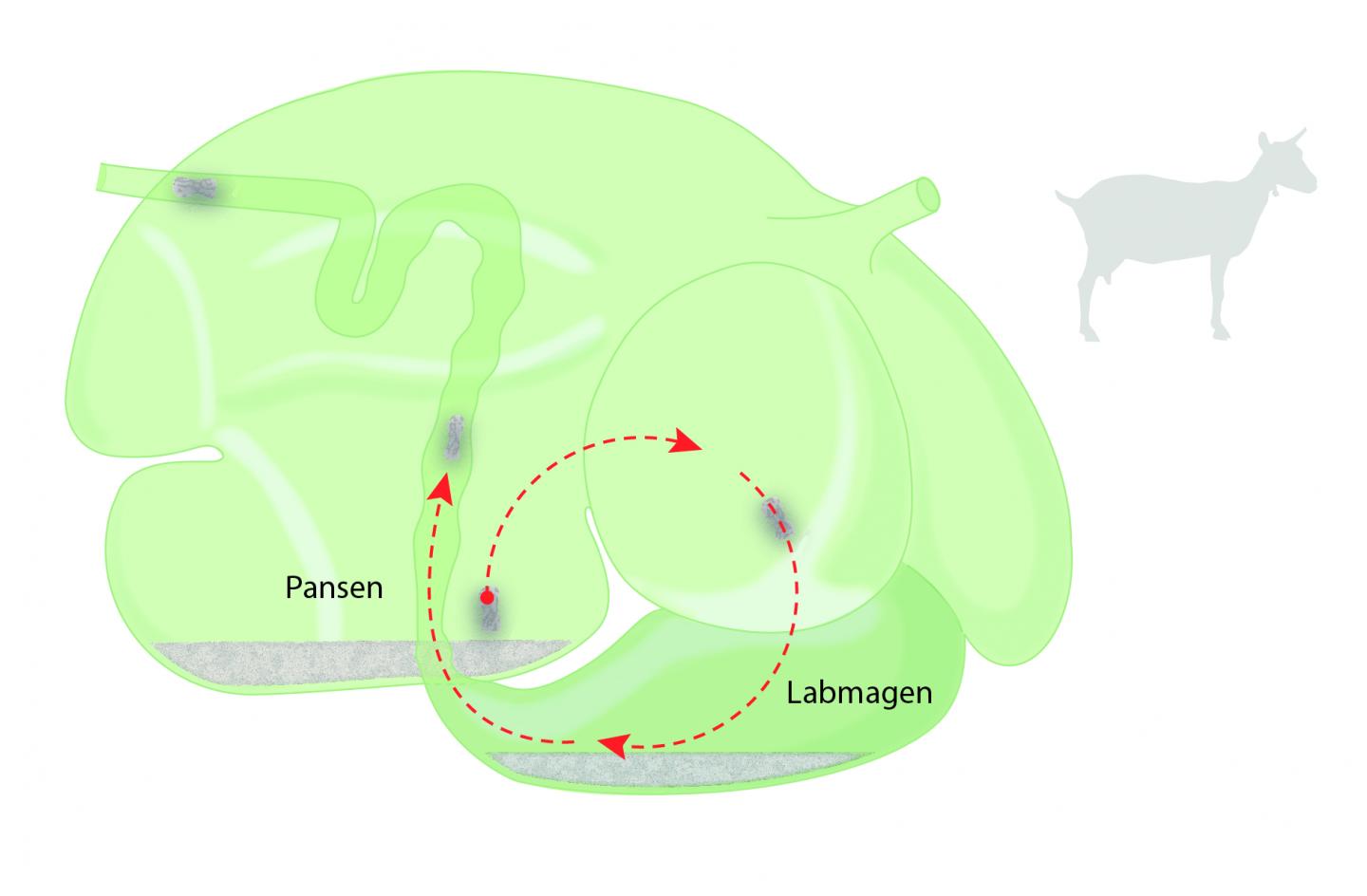
Credit: (Illustration: UZH)
“Field-grazing animals always eat some earth and dust along with the plants,” says Jean-Michel Hatt, professor at the Clinic for Zoo Animals, Exotic Pets and Wildlife. This is particularly the case in dry regions where the wind blows a lot of dust around, and causes a lot of work for the mastica-tory organs. His research team has now shown that various mechanisms prevent excessive abra-sion of the teeth – thus ensuring the animals’ survival.
Short and long teeth in the same habitat
Horses and zebras, for instance, have developed very long teeth in order to compensate for the abrasion caused by dust and sand. Cows and wildebeest, on the other hand, have shorter teeth. “We have always wondered how ruminants living in the same habitat manage with shorter teeth,” Hatt explains.
Ruminants have a stomach system with multiple chambers – rumen, reticuum, omasum and abo-masum – which use bacteria to digest the plant material they eat. The food is washed by rumen fluid and sorted into material that is already small enough to digest, and larger pieces that are regurgitated to be chewed again. It has long been assumed that the cud to be ruminated has been freed from dust and sand.
Sand collects in the stomach
Jean-Michel Hatt and his team have now for the first time tested the influence of various types of food on dental abrasion. Using computer tomography, the researchers observed in goats that the sand ingested with the plants was not equally distributed around the gastrointestinal tract, but collected at specific locations. “We were able to show that there was considerably less sand in the upper rumen, where the material to be ruminated is regurgitated, than in the ingested food itself,” Hatt explains.
What happens to the sand? First it sinks down in the rumen and collects in the abomasum, pass-es through the bowel and is then expelled with the undigested material in the feces. “Organisms that develop such a washing system have a natural way to easily get rid of the rinsed-off material,” says Hatt. It is only when animals ingest a large amount of sand all at once – for example through badly produced silage with an unusual amount of soil contamination – that complications can occur.
Ruminants’ success model
For Hatt, the finding provides another piece of the puzzle explaining the evolutionary success of the ruminant model. It also explains why the animals do a much less thorough job of chewing their food into small pieces the first time around than they do later, when they are ruminating clean material.
###
Literature:
Hatt J-M, Codron D, Müller DWH, Ackermans NL, Martin LF, Kircher PR, Hummel J, Clauss M (2019) The rumen washes off abrasives before heavy-duty chewing in ruminants. Mammalian Biology, June 12, 2019. doi 10.1016/j.mambio.2019.06.001
Media Contact
Dr. Jean-Michel Hatt
[email protected]
Original Source
https:/
Related Journal Article
http://dx.




